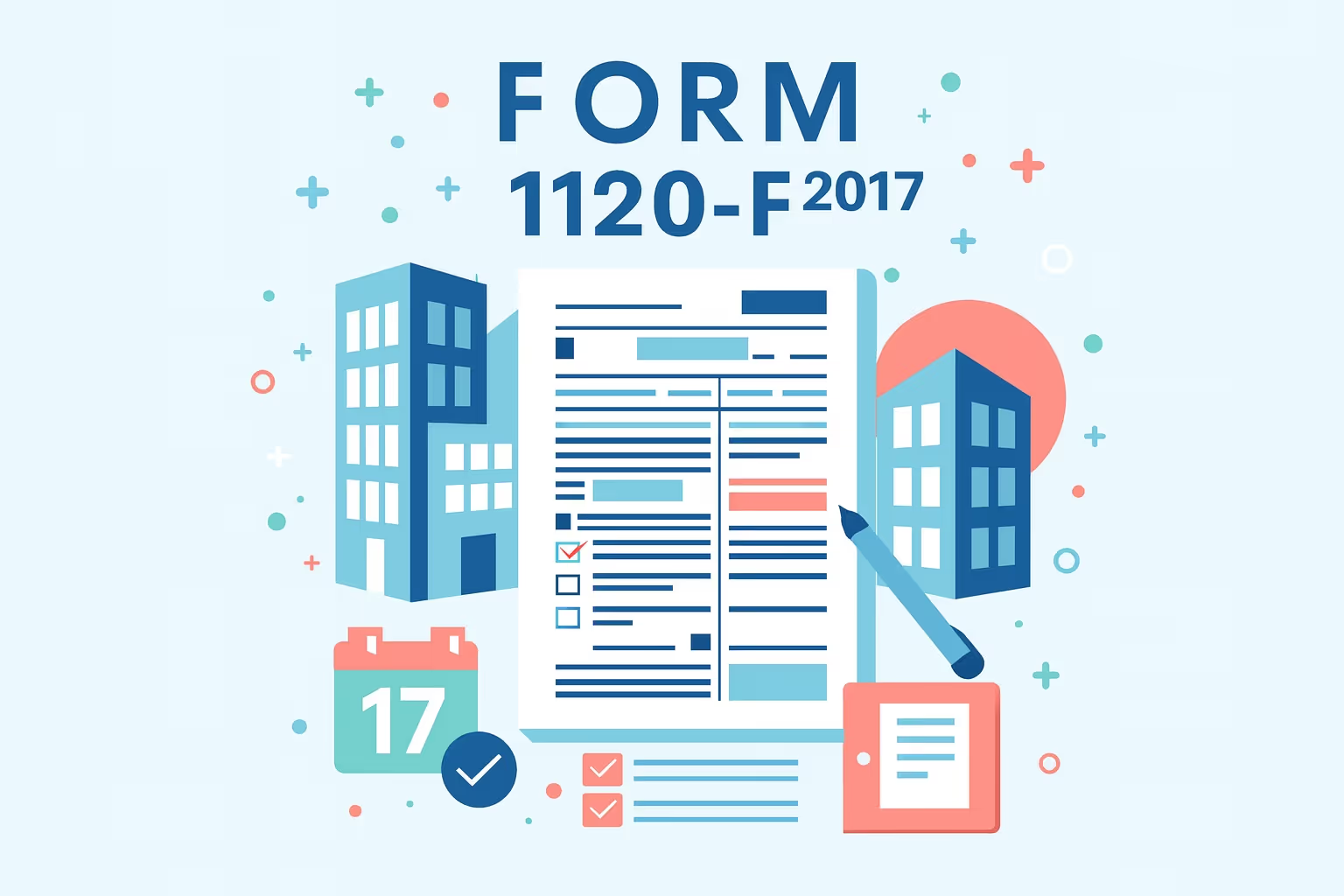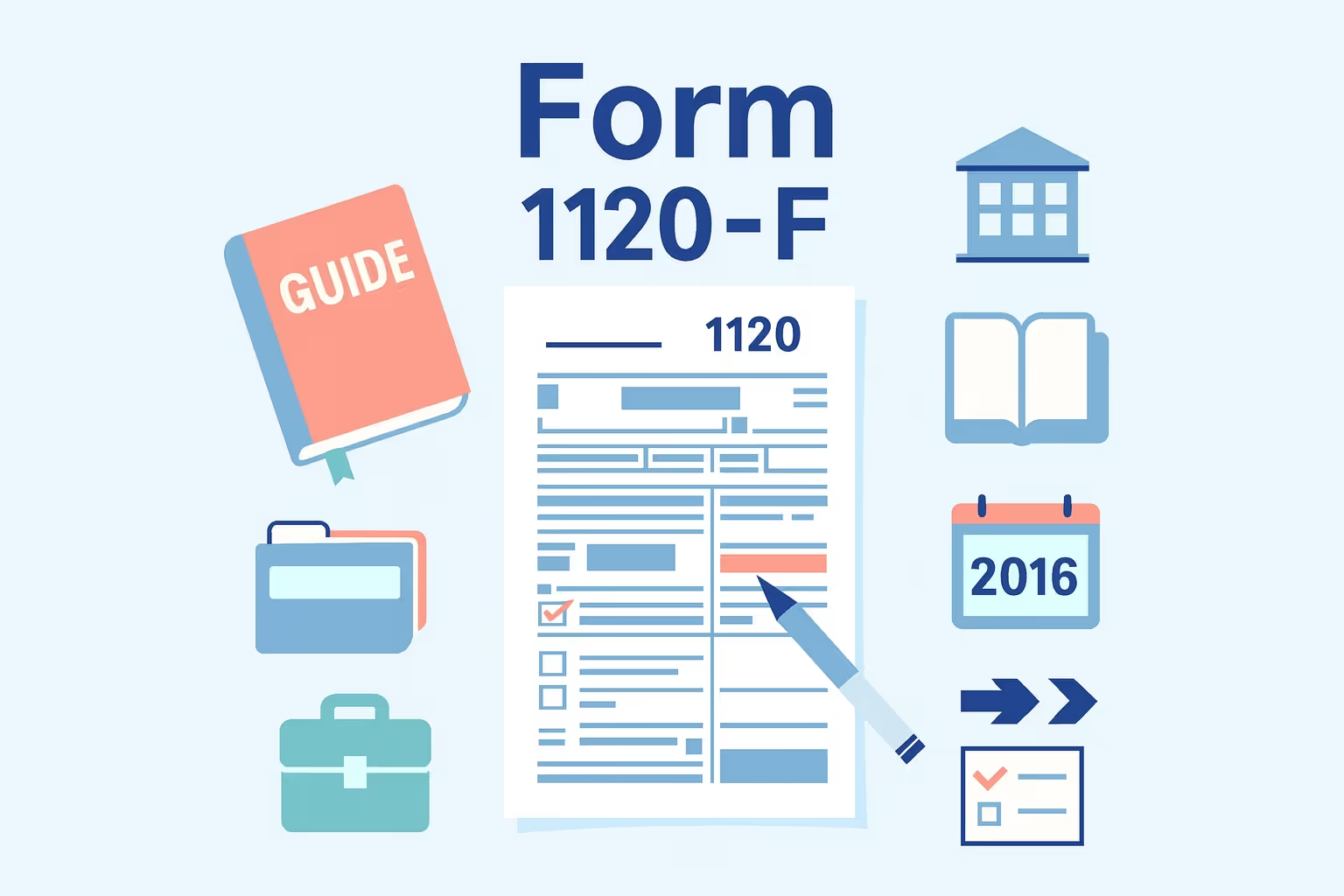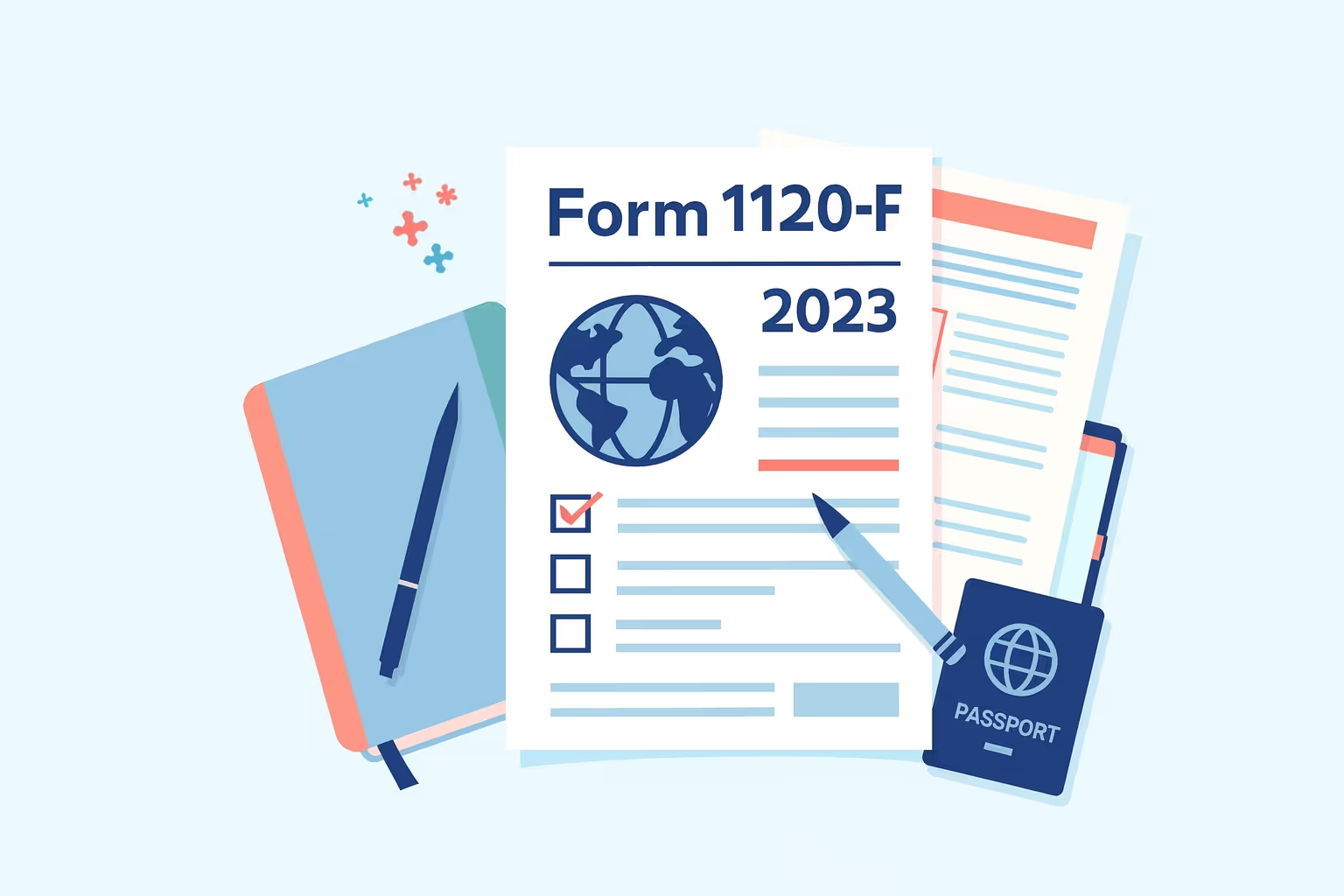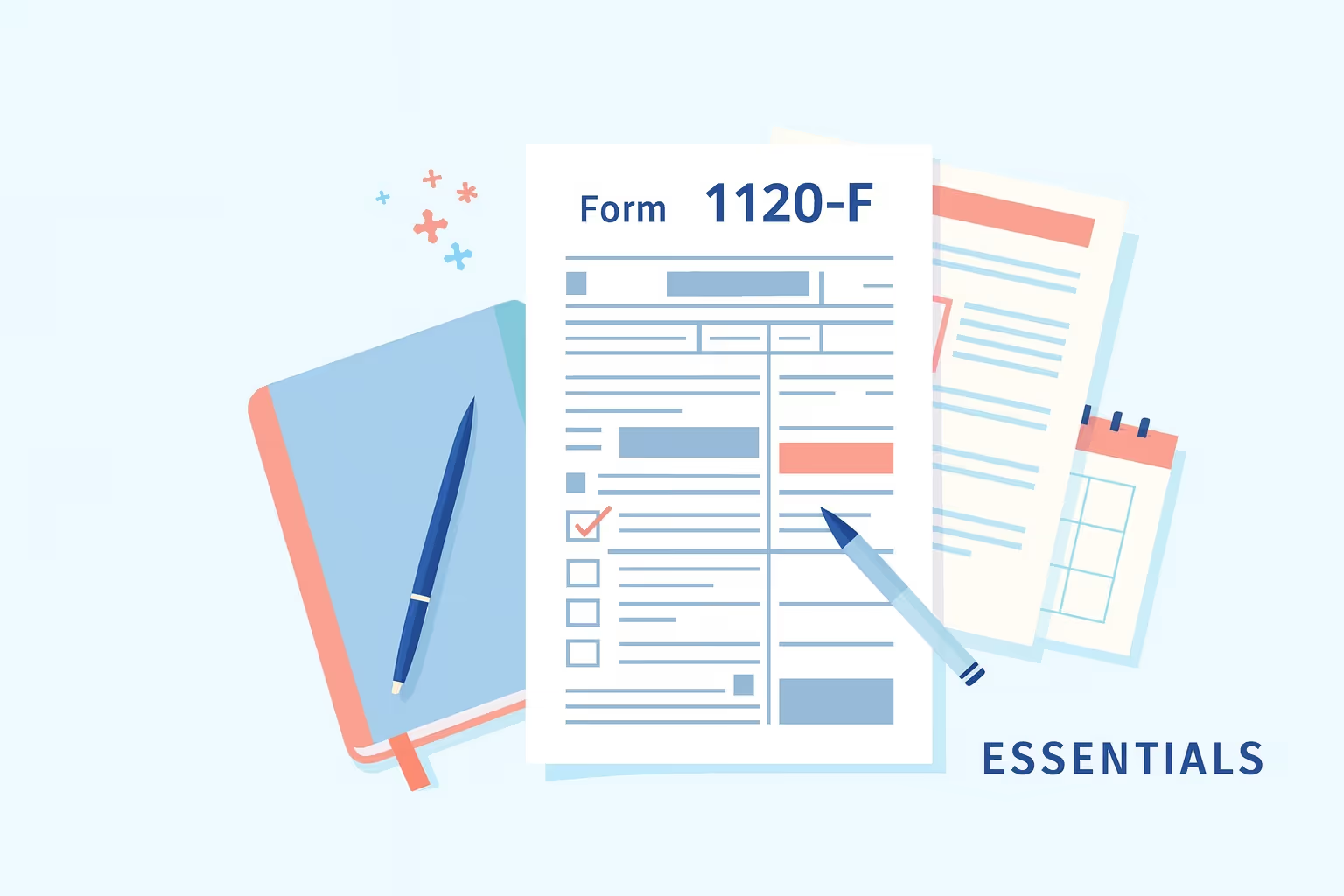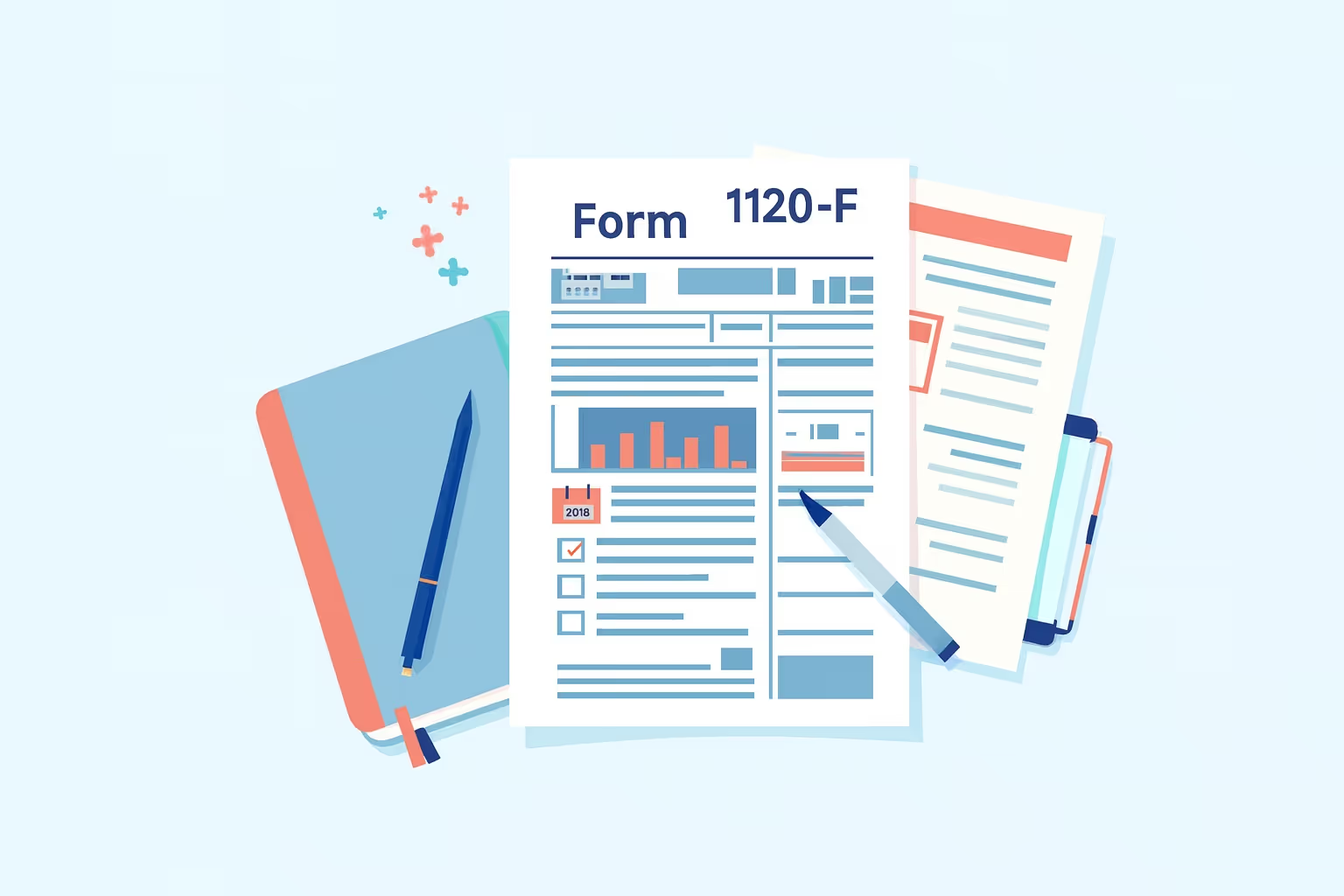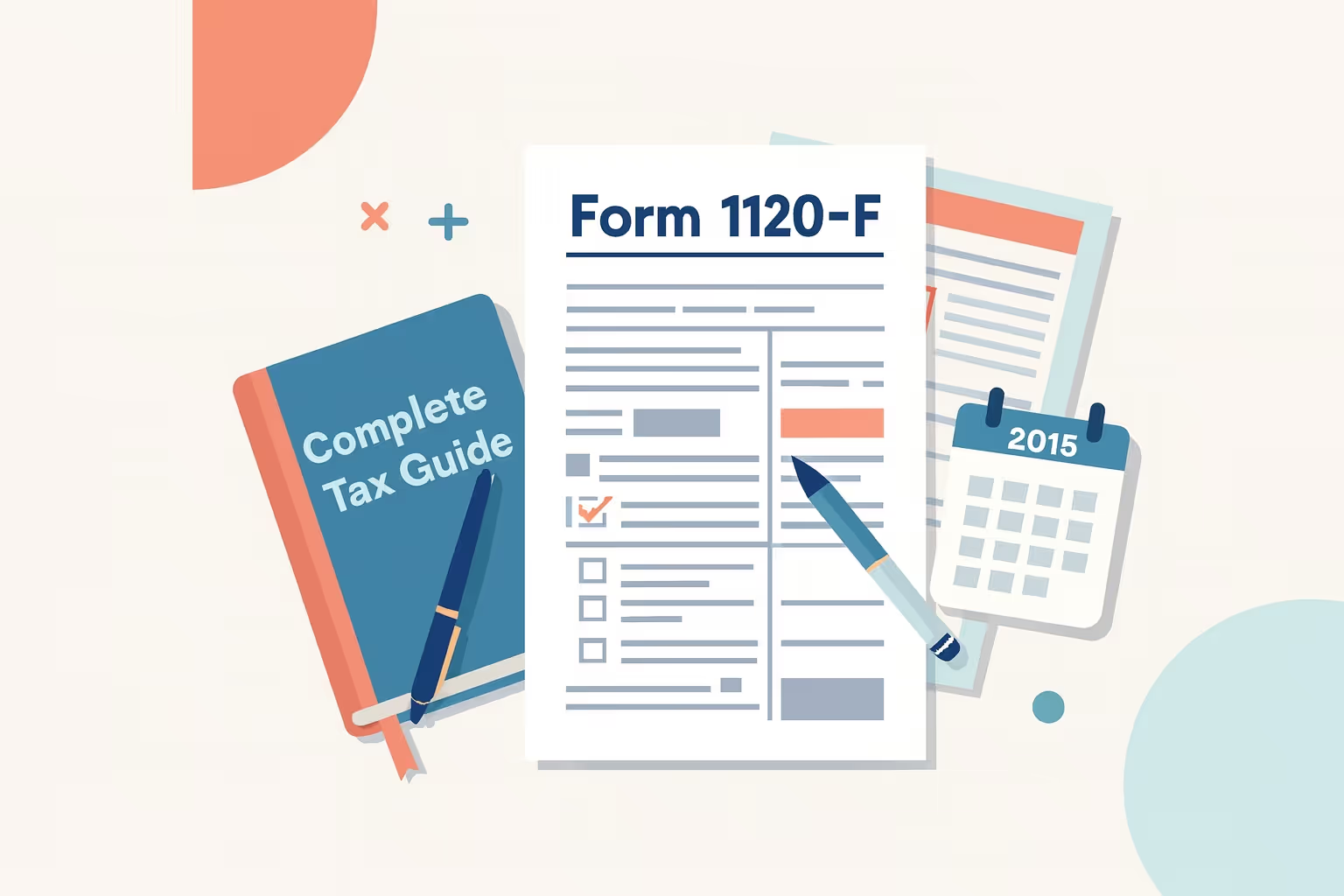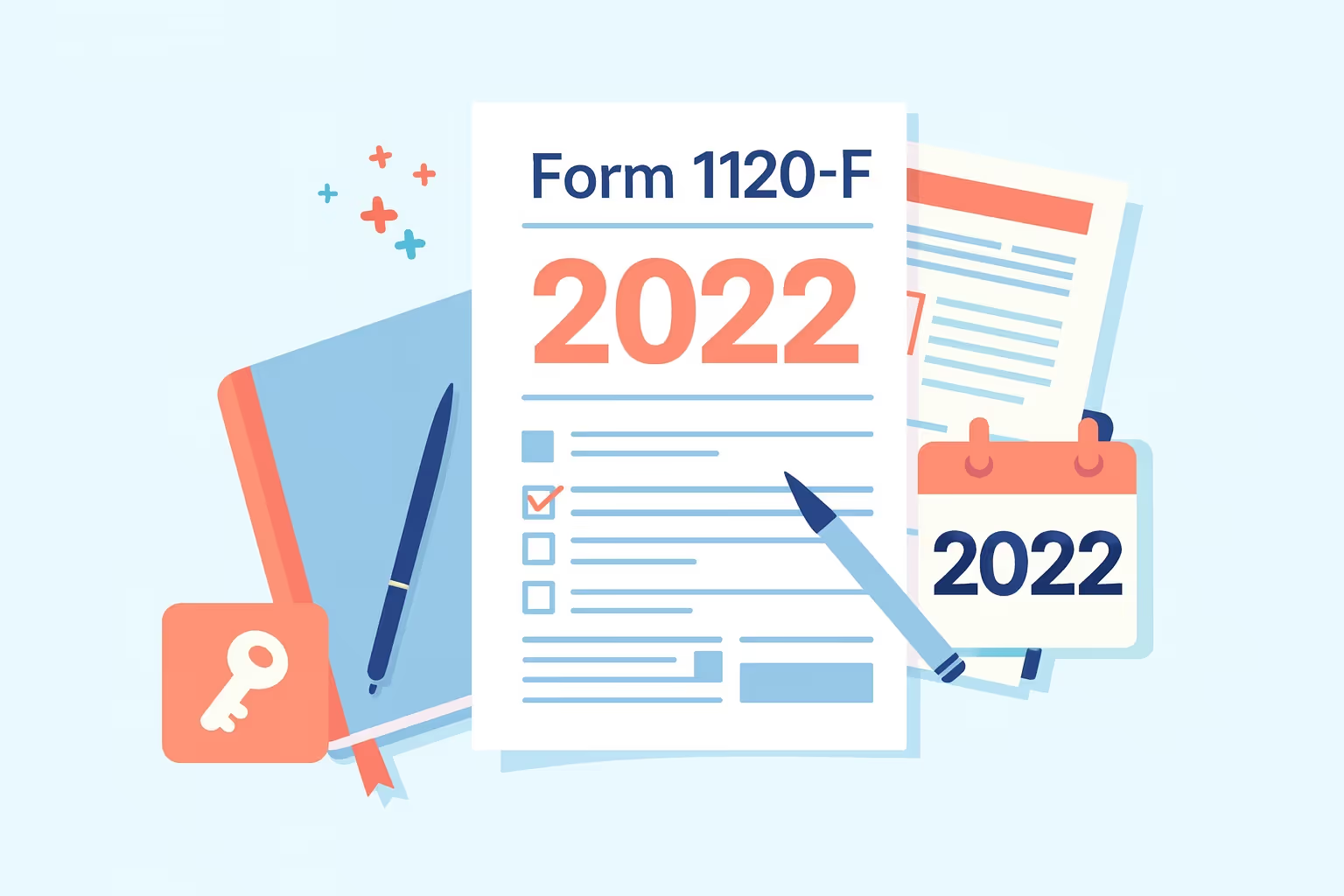
What IRS Form 1120-F (2016) Is For
IRS Form 1120-F (2016) is the U.S. Income Tax Return of a Foreign Corporation. It is used by foreign corporations that conduct business within the United States or earn income from U.S. sources. This form reports income, deductions, credits, and other tax details to determine the corporation’s total U.S. tax liability for the year. By filing Form 1120-F, a foreign corporation declares whether its income is effectively connected with a U.S. trade or business and calculates its taxable income accordingly.
Foreign corporations must file this form if they have income generated in the United States, operated through a branch or office, or claimed treaty benefits under a U.S. income tax treaty. The form helps ensure compliance with U.S. tax laws, preventing double taxation and allowing corporations to claim allowable deductions and credits. It also establishes the Internal Revenue Service’s (IRS) record of the corporation’s financial activities for that tax year.
When You’d Use IRS Form 1120-F (2016)
You should file IRS Form 1120-F (2016) when certain events or obligations make it necessary to report or correct your U.S. income tax return. These situations often apply to foreign corporations that operated or earned income in the United States during the 2016 tax year.
- Late filing requirement: You must file Form 1120-F if you received IRS notices about unfiled returns or realized you missed a previous filing obligation. Filing late can reduce penalties and ensure compliance with IRS tax regulations. If your corporation has multiple years of unreported returns, review your obligations for unfiled federal returns to restore compliance and minimize additional penalties.
- Amended filing: You should submit an amended return when previous reports included errors or omitted taxable income, deductions, or credits that affect your total tax liability.
- Claiming deductions and credits: File within 18 months of the original due date to preserve your right to claim allowable deductions, including those for expenses effectively connected to a U.S. trade or business.
- Responding to IRS inquiries: File when addressing IRS correspondence, audit requests, or notices related to U.S. source income or business activities during the 2016 fiscal year.
Key Rules or Details for 2016
Several updates and filing rules introduced in 2016 changed how foreign corporations report income and calculate their tax obligations under IRS Form 1120-F (2016). Understanding these details ensures accurate reporting and prevents unnecessary penalties.
- New filing deadline: For tax years beginning after 2015, most foreign corporations with a U.S. office are required to file by the 15th day of the fourth month following the end of their fiscal year. Those with year-ends in June follow a different schedule under U.S. tax law.
- Increased penalty: The minimum late-filing penalty has increased to the smaller of the tax due or $205 for returns submitted more than 60 days late, emphasizing the importance of timely filing compliance. If penalties apply, corporations may qualify for IRS penalty abatement based on reasonable cause or first-time relief criteria.
- Updated disclosures: New questions W(2) and BB were added to cover treaty benefits and withholding obligations under international tax treaties.
- Deduction limitations: Corporations that file after 18 months generally lose the right to claim deductions or credits for business expenses unless a protective filing was made.
- Refund limitations: Refund claims for 2016 typically expire three years after the original due date, restricting late refund opportunities for most foreign corporations.
Step-by-Step (High Level)
To properly complete and file IRS Form 1120-F (2016), each stage must be handled carefully to ensure full compliance with U.S. tax regulations and accurate reporting of taxable income.
- Gather IRS transcripts: Before preparing the return, request transcripts from IRS.gov or call 1-800-908-9946 to confirm prior filings, payments, penalties, or account adjustments.
- Complete the correct form: Use the official 2016 version of Form 1120-F and include all required schedules, such as Schedules H, I, P, and S, to report specific income categories and deductions.
- Attach supporting documents: To maintain transparency with the Internal Revenue Service, include forms such as Form 8833 for treaty positions and Form 5472 for related-party transactions.
- Submit the return: If the corporation qualifies for electronic submission, file the completed return by mail to the Ogden, Utah, IRS service center or through approved e-filing systems.
- Keep detailed records: Retain certified mail receipts, copies of all filings, and related correspondence to support your position in case of future audits or IRS reviews.
If you need help identifying which forms accompany your filing, visit our IRS Form Help Center for a complete index of business-related tax forms.
Common Mistakes and How to Avoid Them
Many foreign corporations filing IRS Form 1120-F (2016) make avoidable errors that lead to processing delays or penalty assessments. Paying attention to these common issues helps ensure your filing remains valid and compliant.
- Missing required schedules: Always attach all applicable schedules, such as Schedule I for interest allocation and Schedule P for partnership income, to ensure your filing is complete.
- Not filing protective returns: Submit a protective return within 18 months of the original due date to preserve the right to claim deductions and credits if the IRS later determines that your income is effectively connected.
- Incorrect income reporting: Clearly distinguish between U.S.-source income subject to withholding and effectively connected income that must be reported on Form 1120-F to avoid discrepancies.
- Failure to disclose treaty positions: Complete Question W(1) accurately and attach Form 8833 whenever you claim benefits under a U.S. income tax treaty to meet disclosure requirements.
- Unsigned or undated filings: Ensure the return is signed and dated by an authorized corporate officer. The IRS treats unsigned filings as invalid submissions.
Foreign entities with ongoing compliance or debt issues may qualify for business tax relief programs to resolve outstanding balances or negotiate more favorable terms with the IRS.
What Happens After You File
Once IRS Form 1120-F (2016) is submitted, the IRS reviews the return to calculate the corporation’s income tax liability and confirm all supporting information. The review period typically takes six to eight weeks, though late or amended filings may take longer. The IRS may issue notices requesting clarification or additional documentation during this time.
If any balance remains due after credits and payments, the corporation can make estimated tax payments or apply an available foreign tax credit to reduce the amount owed. Maintaining accurate records ensures efficient processing and compliance with ongoing U.S. tax obligations.
FAQs
What is effectively connected income under IRS Form 1120-F (2016)?
Effectively connected income refers to income effectively connected with a U.S. trade or business. The Internal Revenue Service treats this income as taxable, regardless of whether the income was directly earned within the United States by the foreign corporation engaged in business operations.
How does the foreign tax credit apply to a 2016 filing?
A foreign tax credit can reduce the amount of unpaid tax for a foreign corporation engaged in both U.S. and international business activities. It helps prevent double taxation on income effectively connected to operations in more than one country.
Are estimated tax payments required for foreign corporations?
Foreign corporations that expect to owe tax must make estimated tax payments throughout the year. These payments are submitted to the Internal Revenue Service center to help determine whether income from U.S. operations meets ongoing tax obligations.
How does the Internal Revenue Code affect Form 1120-F requirements?
The Internal Revenue Code defines how a foreign corporation engaged in U.S. business activities must report income effectively connected with that business. It ensures that unpaid tax is appropriately assessed and collected according to federal standards.




















